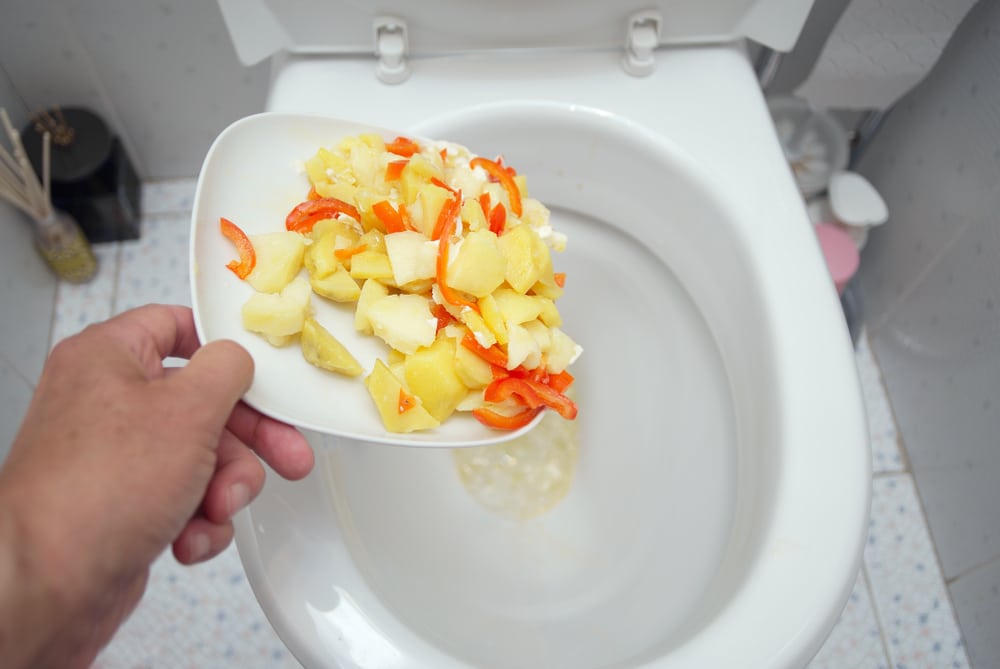What're your beliefs about Think Twice Before Flushing Food Down Your Toilet?

Intro
Many individuals are commonly faced with the predicament of what to do with food waste, particularly when it involves leftovers or scraps. One usual question that occurs is whether it's all right to flush food down the toilet. In this post, we'll delve into the reasons why individuals may consider purging food, the effects of doing so, and alternate methods for correct disposal.
Reasons individuals might consider purging food
Lack of recognition
Some individuals may not be aware of the possible harm brought on by flushing food down the toilet. They may erroneously think that it's a safe practice.
Convenience
Purging food down the toilet may seem like a quick and very easy option to taking care of unwanted scraps, particularly when there's no neighboring garbage can available.
Negligence
Sometimes, people may just pick to flush food out of sheer laziness, without considering the consequences of their actions.
Consequences of flushing food down the toilet
Ecological impact
Food waste that ends up in waterways can add to contamination and damage marine environments. Additionally, the water made use of to flush food can strain water sources.
Pipes concerns
Flushing food can bring about clogged pipes and drains, triggering costly pipes repairs and aggravations.
Kinds of food that ought to not be purged
Fibrous foods
Foods with coarse textures such as celery or corn husks can obtain tangled in pipes and cause clogs.
Starchy foods
Starchy foods like pasta and rice can absorb water and swell, resulting in blockages in pipelines.
Oils and fats
Greasy foods like bacon or cooking oils should never ever be purged down the bathroom as they can strengthen and cause clogs.
Appropriate disposal approaches for food waste
Utilizing a waste disposal unit
For homes outfitted with garbage disposals, food scraps can be ground up and purged through the plumbing system. Nevertheless, not all foods appropriate for disposal in this fashion.
Recycling
Specific food packaging materials can be recycled, minimizing waste and minimizing ecological influence.
Composting
Composting is a green means to take care of food waste. Organic products can be composted and utilized to enrich dirt for gardening.
The value of appropriate waste management
Reducing ecological harm
Proper waste monitoring techniques, such as composting and recycling, aid lessen contamination and preserve natural deposits for future generations.
Protecting pipes systems
By avoiding the method of flushing food down the commode, house owners can prevent costly plumbing repair services and preserve the stability of their plumbing systems.
Final thought
In conclusion, while it may be tempting to purge food down the bathroom for comfort, it is essential to understand the possible effects of this action. By adopting appropriate waste administration techniques and dealing with food waste responsibly, individuals can add to much healthier pipes systems and a cleaner environment for all.
FLUSH FOOD DOWN THE TOILET?
FLUSHING FOOD CAN CAUSE BLOCKED DRAINS IN YOUR HOME
All of the plumbing fixtures in your home are connected to the same sewer pipe outside of your home. This outdoor sewer pipe is responsible for transporting all the wastewater from your home to the Council sewer mains. Even small pieces of food that go down the kitchen sink can cause problems for your sewer. It should therefore be obvious that flushing larger bits of food, such as meat, risks a clog in either the toilet itself or the sewer pipes. Flushing greasy food is even more problematic because oil coagulates when it cools, coating the interior lining of your pipes.
THE TOILET IS NOT A BIN
Food isn’t the only thing that people shouldn’t be flushing down the toilet. People use the toilet to dispose of all kinds of things such as tampons, makeup wipes, dental floss, kitty litter and even underwear. Water goes to great lengths to educate residents about the high costs and stress placed on wastewater treatment systems simply from people flushing the wrong stuff down the toilet. It costs taxpayers millions of dollars each year, and homeowners thousands in blocked drain repairs.
FLUSHING FOOD IS A WASTE OF WATER
Flushing food is a waste of our most precious resource - water. In June this year Level 1 water restrictions were introduced to protect water supply from drought conditions. Much of New South Wales continues to be affected by prolonged drought with recent figures revealing up to 97 per cent of the state remains in drought. Depending on whether you have a single or dual flush toilet, every single flush uses between five and 11 litres of water. In the current climate this is a huge amount of water to be wasting on flushing food that should be placed in the bin (or better yet, the compost).
https://www.jabplumbingsolutions.com.au/blog/can-you-flush-food-down-the-toilet

I'm very enthusiastic about and I'm hoping you enjoyed our blog post. Those who enjoyed our blog post please do not forget to share it. I truly appreciate your readership.
Schedule Service Pickup
Comments on “Are You Permitted to Flush Food Down the Toilet?”